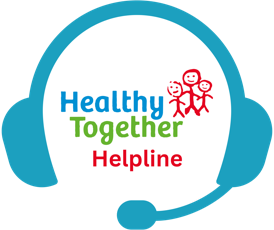This article gives you information on what your options are if you have had a caesarean birth before. It explains the benefits and risks of both, so you can make the choice that feels right for you and your family.
You will have an appointment to go through your options and make a plan with a doctor. This can happen as early as 20 weeks into your pregnancy. You can change your mind at any time during your pregnancy and in labour.
If you have had a caesarean before, you have two main options for your next birth:
- VBAC (Vaginal Birth After Caesarean) – planning to give birth vaginally
- Planned caesarean (ELCS) – booking another caesarean in advance
VBAC might not be right for you if:
- You had a classical or T-shaped cut on your womb
- You had a uterine rupture before
- You had serious problems during your last caesarean
- You have placenta praevia or other issues in this pregnancy
There might be other reasons like if you have had more than one caesarean before, you have a high BMI, or a large baby. An individual plan will be made with you.
If your last caesarean was in another hospital or country, your records may not be available. Please share as much information as you can.
You can still consider VBAC after two caesareans. It will need more careful thought and discussion with your doctor. The risk of scar rupture (where the old caesarean scar opens during labour) is higher.
You will need to talk to a consultant to make a safe plan. They will review your history and help you decide what is best. Your wishes matter and the team will support your choice. If VBAC is not advised, they will explain why and help to plan a positive birth with you.
- About 3 in 4 people (72–75%) who try for VBAC give birth vaginally
- If you’ve had a vaginal birth before, your chance is even better – about 9 in 10 (85–90%)
- About 1 in 4 people (25%) may still need a caesarean during labour
Benefits
- Faster recovery – usually home in 1–2 days
- Less pain and quicker return to daily life
- No surgery which means lower risk of bleeding, clots or injury to organs
- Lower chance of infection – (1–2% vs 5–10% with caesarean)
- Safer for future pregnancies
- More likely to have vaginal births in the future
Risks
There is a small chance the scar on your womb may start to break down (scar rupture), which could have serious complications including death of mother or baby.
- 1 in 200 (0.5%) chance of scar rupture if labour starts naturally
- 1 in 100 (1%) chance of scar rupture if labour is induced with the hormone drip (oxytocin)
- 1 in 50 (2%) chance of scar rupture if labour is induced with prostaglandins and oxytocin
- 1 in 4 (25%) may need an emergency caesarean birth
- 2 in 100 (2%) need a blood transfusion
Slightly higher risk to baby than with a planned caesarean.
Benefits
- You know your baby’s birth date (unless your labour starts early)
- Very low risk of scar rupture – 1 in 5,000 (0.02%)
- Avoids emergency surgery
Risks
- Longer recovery – scar takes 6 weeks to heal
- Higher infection risk – 5 to 10 in 100 (5-10%)
- Small risk of blood clots – 1 in 300 to 500
- Small risk of injury to bladder or bowel – 1 in 100 to 200 (1%)
- Baby may have breathing problems if born early:
-
- 1 in 100 (10%) at 37 weeks
-
- 1 in 100 (1%) at 39 weeks
- Higher risk of problems with the placenta in future pregnancies
If you go past your due date or there are concerns, you may need your labour induced. Your doctor will explain the options with you.
It is important to know that being induced, if you have had a caesarean before, increases the risk of the scar breaking down:
- Using a balloon or breaking the waters – risk of about 1 in 100-200
- Using the oxytocin drip – risk of about 1 in 100
- Prostaglandins and oxytocin – risk of about 1 in 50
You can choose between induction or planned caesarean after talking through the risks.
Click here for more information about induction of labour.
If you choose VBAC, it is advised that:
- Your baby’s heartbeat is monitored continuously with a CTG machine so that changes can be picked up quickly
- A small tube (cannula) is placed in your hand for blood tests and medication
- Regular observations and close monitoring of your labour progress
Signs of scar rupture include:
- Sudden severe pain between contractions
- Vaginal bleeding
- Changes to baby’s heartbeat
- Changes in how your bump feels
If there are any concerns, the team may recommend an emergency caesarean birth to keep you and your baby safe.
The team might talk to you about using the hormone drip and the risks of using this. You can ask for a caesarean during your labour. The team looking after you will explain your options and help you decide.
Frequently Asked Questions (FAQS)
Please take a look at some commonly asked questions.
Yes. Most people have safe VBACs. The risk of scar rupture is low (1 in 200) if labour starts naturally.
You will be checked when you arrive. You may still have a caesarean, or you may choose VBAC if it is safe.
Yes. All usual options are available, including gas and air and an epidural.
No. Most people can try for a vaginal birth after a previous caesarean, if it’s safe.
Yes, but it needs to be done carefully with close monitoring.
No. The risk of serious problems is low but this depends on your pregnancy and history.
No. These may increase risks slightly but VBAC is still possible.
Yes. You can change your mind, and your team will support you with all the information so you can make an informed choice.
Yes, if you are fully dilated and the baby is in a good position along with other factors. The team will explain your options if this is required during your birth.
Where to get support
- Talk to your midwife or doctor
- Ask about the Birth Choices clinic
- Listen to the Leicester Maternity Matters Podcast Episode for VBAC. There are episodes on other topics that may be useful for you in pregnancy
Further Resources

Leicestershire Partnership NHS Trust runs a confidential secure text messaging service for parents of children aged 0-19 years called Chat Health. The service operates Monday to Friday between 9am and 5pm, excluding bank holidays. All texts will be responded to by a public health nurse (health visitor/school nurse) within 24 hours. Outside of the service working hours, you’ll receive a message back to inform you that your text will be responded to once the line reopens.
-
Leicester City:
text
07520 615381 -
Leicestershire & Rutland:
text
07520 615382

Leicestershire Partnership NHS Trust runs the Healthy Together Helpline for parents and carers in Leicester, Leicestershire and Rutland. The Helpline’s qualified health and administrative professionals offer easy to access, safe and free advice, support and signposting. Calls are answered from 9am – 4.30pm on weekdays, excluding bank holidays. Calls are charged at the same rate as calling a standard landline number.
-
Leicester, Leicestershire & Rutland:
call 0300 300 3001

Should you require urgent health advice in the meantime, please contact your GP, visit an NHS walk-in centre or call NHS 111. For emergencies, dial 999 or visit A&E.





